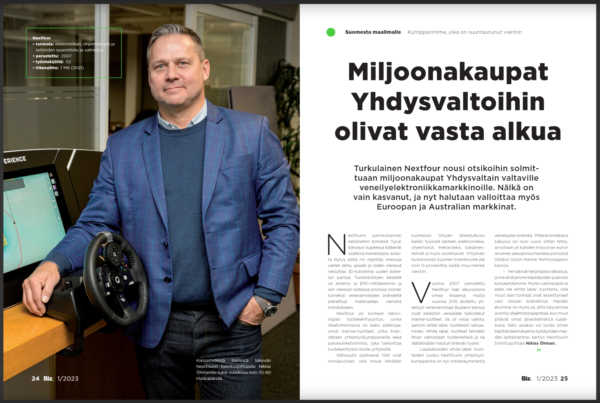Day by day we are moving towards a more autonomous world. This means that more devices are connected to and communicating with each other over the Internet. Products ranging from light bulbs to cars are now sending gathered information to the user or service provider, and a secure, reliable connection is needed to facilitate the ever growing traffic. The goal is to have sensors, devices and servers communicating with each other reliably without wasting a lot of effort in configuration.
Nextfour has researched different types of Low Power Wide Area Networks (LPWAN), and here our developers Teemu Peltola and Sebastian Nyberg list some of their findings:
LPWAN is designed to have a long connectivity range with low bandwidth. This allows devices that are far from base stations to communicate and send data. With LPWAN technologies, the penetration of signal is significantly improved, which means it is possible to place sensors e.g. deep underground or behind thick walls.
Alongside the propietary LPWAN technologies such as LoRa, new 3GPP standardized LPWAN technologies are emerging. Good examples of these are NB-IoT (Narrow Band IoT) and LTE Cat M1. NB-IoT is best suited for applications that require efficient battery usage and low bandwidths (max. 250 kbit/s) while LTE Cat M1 offers more bandwidth (max. 1 Mbit/s) and is better suited for e.g. moving vehicles.
While LoRa is already available in larger areas in Finland, it needs a specific type of base stations and other infrastructure in order to be installed. Both NB-IoT and LTE Cat M1 use 4G network, but only a fraction of the bandwidth. The existing network coverage can be upgraded to support the technologies by updating operator’s base station software.
LTE Cat M1 and NB-IoT are soon available for commercial use. With general availability starting at the beginning of 2018, compatible devices could be used first all around Finland, and later on in Europe.
Nextfour’s test of both NB-IoT and LTE cat M1 on test networks have so far been successful. We are looking forward to launching products that use these new technologies and bringing the new possibilities they open to our customers. We are excited to take the step into the new era of IoT.





